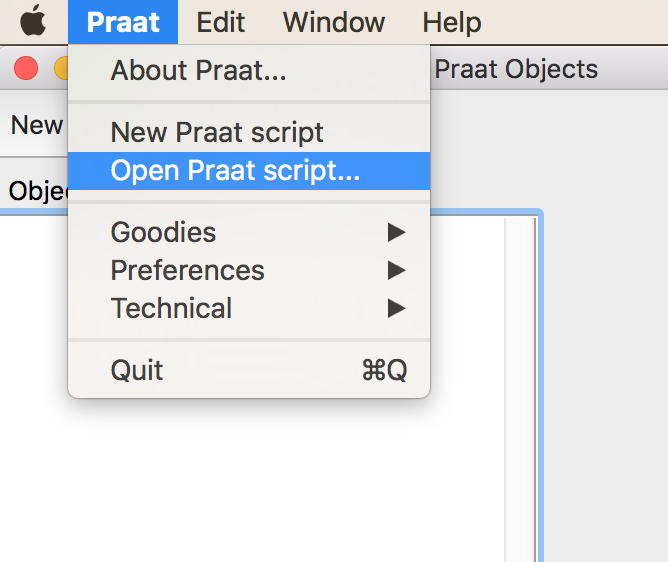

I wrote a couple of Perl scripts that do just this, converting to and from JSON/YAML, and a Praat plugin to do this from the Praat GUI. get measurements.praat original script created by Christan Kroos. You can then expand that Table to include data from the Pitch and Intensity objects (or whatever objects you need).Īlternatively, most (=not all) text-based formats used by Praat are almost YAML, so you could try to convert them and read them as-is into whatever program you want to use later on.

If still some fonts are not appearing properly, use Import option on Excel and import the. There, choose UTF-8 so that the file will open properly in Excel.

csv file, go to Praat -> Preferences -> Text writing preferences. (output of new syllable-nuclei-script) and the corresponding sound file as input. csv file can also be created with these values. command available for Formant objects, which will create a Table with the formant data. PRAAT scripts to measure speed fluency and breakdown fluency in speech. To get started, you could use the Down to Table. You could process them within Praat and put the data you want into a Table object with whatever format and structure you want and save it as either a tab or a comma separated file (see my related answer). Working with csv files in Python Example 1: Reading a CSV file Python import csv filename 'aapl.csv' fields rows with open(filename, 'r') as csvfile: csvreader csv.reader (csvfile) fields next(csvreader) for row in csvreader: rows. Praat-specific (you can check them out by using the Save as text file. For working CSV files in Python, there is an inbuilt module called csv. This might be the hardest part, since Praat does not have any standard way to export data, and the data formats that it uses, although they are all text-based, are all very. You'll still need to know some things about the audio you're processing, though, like the likely frequency of the maximum formant you are interested in, or the range within which you estimate the fundamental to be (you might want to look at this plugin with automatic methods for estimating f0 range).Īs for the exporting, what I assume you mean by this is that you want this information to be accessible from a program that is not Praat. We are going to be using the Parselmouth library to call Praats acoustic. Praat-Scripts/labelfromtextfile.praat Go to file Cannot retrieve contributors at this time 68 lines (67 sloc) 2.67 KB Raw Blame This script reads lines from a text file (called labels.txt and saved in the home directory) and adds them line by line as labels for intervals in a selected TextTier in the selected TextGrid object.
#Write praat script that goes through csv file how to#
Intensity = To Intensity: min_f0, 0, "yes" Styler explains both how to use Praat by hand and how to write Praat scripts. Assuming that by "all possible data about audio" you only mean fundamental frequency, formant structure and intensity contour (and not, say, spectra, pulses, etc), the easiest way to do this is to generate respectively a Pitch, Formant, and Intensity objects.


 0 kommentar(er)
0 kommentar(er)
